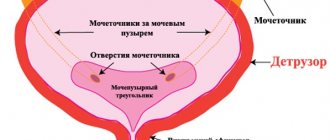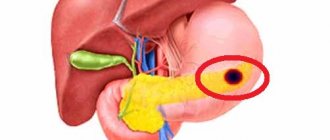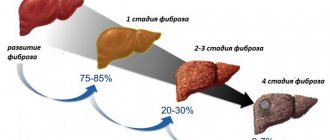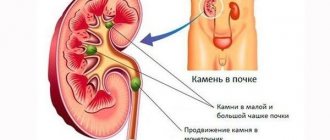- Primary and secondary
- Progressive and stable
- Male and female
- Peripheral and central
- Degrees
- Video
Having a certain reserve of fat, a person is “confident in the future”, because he knows that in case of unforeseen circumstances, it is due to the breakdown of fat that he will be provided with energy and water. Thanks to adipose tissue, a comfortable body temperature is maintained, internal organs are protected from external influences, and in some cases from the spread of the inflammatory process (for example, with appendicitis and ulcers). In addition, subcutaneous fatty tissue is a generator of biologically active substances, such as vitamins and hormones, as well as a participant in metabolic processes, in particular those occurring in the musculoskeletal system . This begs the conclusion about the exceptional benefits of fat for humans, but then why is obesity dangerous, since based on the above, fat performs important functions in the body? Indeed, it does. But only until there is too much of it and it begins to slow down metabolic processes, slowly killing a person. Obesity reduces a person’s quality of life, changes his behavior and psyche, and in addition, causes a number of diseases, which can be as difficult to get rid of as the excess weight itself. A timely calculation of the degree of obesity will help keep the situation under control and avoid the development of at least alimentary or primary obesity.
Forms of obesity depending on the cause of the pathology
Primary (exogenous) or nutritional obesity is caused by lifestyle. Modern man eats a lot and moves little, and a violation of the normal ratio between incoming and expended calories inevitably leads to the accumulation of fat. How a person eats also matters, because the development of nutritional and constitutional obesity can be caused not so much by an abundant diet as by an unbalanced one, for example, with excess fat and carbohydrates, as well as erratic meals . Irregularity of nutrition with nutritional constitutional obesity (when fat is deposited under the skin, changing the contours of the body) is very common, and usually a person cannot understand why his weight is increasing, although he “doesn’t eat anything” all day, except for dinner... In addition, the primary form of the disease is caused by improper eating behavior, for example, abuse of fast food and the habit of “eating” stress, relieving psychological stress with food.
Secondary (organic, endogenous) obesity develops due to diseases of the internal organs of a person or is hereditary. With this form, people gain weight, despite consuming a reasonable amount of good quality food, and, as a rule, they fail to get rid of extra pounds without medical intervention. Moreover, we are talking not only about the help of nutritionists, but also about the participation in the process of specialized specialists - an endocrinologist and a gastroenterologist.
The following types of secondary obesity are distinguished:
- endocrine obesity , which is caused by diseases of the organs that produce hormones, that is, the thyroid gland (thyroid obesity), pituitary gland, adrenal glands, as well as the pancreas and gonads; treatment of this type of obesity is carried out comprehensively, and first of all, the patient’s hormonal levels are normalized;
- cerebral (brain) obesity, which is a complication after infectious diseases, injuries and brain tumors; a very serious pathology requiring equally serious treatment;
- medicinal obesity, which occurs as a result of taking, as a rule, hormonal drugs, for example, glucocorticoids and oral contraceptives, as well as antidepressants, especially if they are used uncontrollably by a person who is not actually suffering from depression.
Types of obesity: understanding the initial data
This is commonly referred to as excessive accumulation of lipids in adipose tissue. This phenomenon leads to a variety of complications, but primarily to excess body weight. This disease appears when there is a so-called positive energy balance. This means that the amount of energy used (burnt) is several times lower than the calories (food) received can provide.
Any obesity can be divided into separate types and types: according to the location of fat deposits, according to the causes and mechanisms of occurrence and development.
Mechanism
There are two main mechanisms for the occurrence of excess weight.
In the first case, weight increases due to an increase in the size of fat cells (adipocytes), as well as the amount of lipids in them. In the second, obesity may appear due to a significant increase in the number of adipocytes. The hypertrophic type is more common, and in most cases women suffer from it. Therefore, it is they who most often experience the phenomenon of cellulite.
Alimentary (primary) obesity
Scientists also call this disease exogenous constitutional obesity. There is a lot of material about it on our website; it wouldn’t hurt to study it in more detail. In a nutshell, most often this type of excess weight occurs as a result of systematic overeating, as well as decreased physical activity. At the same time, the body receives either carbohydrates, which are processed into lipids, or the fats themselves. They are deposited in ugly folds on the sides and hips.
Additional causes of nutritional obesity may be genetic (hereditary) predisposition, as well as eating disorders. This includes nightly raids on the refrigerator, hidden food consumption, and the inability to control what is eaten.
Secondary obesity
There is a special attitude towards this type of disease, but let’s take it in order. For simplicity, doctors have divided the disease into three main subtypes.
Mental
Excess weight occurs due to a person’s inability to control himself, his diet, diet and daily routine. This category can also include excess weight, which is caused by long-term use of various antipsychotics or psychotropic drugs.
Cerebral
This type of disease can appear in those patients who have disorders in the functioning of the brain (food centers) and the central nervous system. The following reasons can directly influence the increase in excess weight.
- Traumatic brain injuries.
- Brain tumors of various etiologies.
- Encephalitis and other infectious diseases.
- Postoperative syndrome.
- “Empty sella” syndrome (intussusception of the subarachnoid space).
Endocrine
If the production of certain hormones is disrupted, as well as hormonal imbalance, an excess of fat deposits can also occur. Such obesity is usually divided into several additional subcategories.
- Adrenal. Often it indicates the presence of a tumor of the adrenal cortex, which is engaged in the production of the hormone cortisol.
- Pituitary. Any kind of damage to the ventromedial hypothalamus leads to obesity of the hypothalamic type.
- Menopausal. Occurs in women during menopause.
- Hypothyroid. It can develop due to a deficiency of the thyroid hormones triiodothyronine and thyroxine, which are usually produced by the thyroid gland.
Against the background of the latter type, significant, serious inhibition of all metabolic processes can develop. Metabolism is reduced to a minimum, so fat accumulation occurs even faster. It happens that several reasons are intertwined, then it can be difficult to find out where the problem came from, as well as to choose the appropriate therapy.
Forms of obesity according to the dynamics of pathology development
Few people gain weight instantly; as a rule, fat gradually accumulates over several years and in the early stages of the disease does not burden the person too much. Having reached a certain value, body weight stabilizes: it may decrease or increase slightly, but in general it is maintained at a certain level. Thus, we can distinguish:
- progressive (dynamic) obesity, in which body weight steadily increases;
- stable obesity, in which excess weight is fixed at certain indicators and does not have a tendency to increase.
Classification of obesity in children
It is considered pathological for a child to be overweight by 15% or more than recommended for his age. Types of obesity in children are divided into primary and secondary. The first is caused, as a rule, by early complementary feeding, replacing mother's milk with cow's or goat's milk; observed in children who often overeat. The basis of the second type is the presence of endocrine diseases. Gradation of pathology in children (by degrees):
- The child's weight exceeds the norm by 15-24%.
- Excess weight ranges from 25 to 49% of normal.
- Body weight is 50-99% more than normal.
- The most severe degree is weight at least 2 times more than the required norm.
Forms of obesity by gender
- Female type obesity , which is also called gynoid obesity, is not considered by experts to be too dangerous, since it is typical for women with normal hormonal levels and a properly functioning endocrine system. If obesity develops according to the female type, then excess adipose tissue is noted in the lower part of the body, that is, in the hips, lower third of the abdomen and buttocks, which is why the figure takes on a resemblance to a pear. If for ladies such a comparison is natural, because a thin waist coupled with lush hips looks very attractive, then for men the female type of obesity does not add beauty and does not add sexuality.
- Male pattern obesity, also called android obesity, is characterized by the deposition of fat on the abdomen, shoulders and chest area, making the body look like an apple. Although visually men with this type of obesity do not look as deplorable as their pear-shaped comrades (at least they do not cause unnecessary associations), serious problems await them. If fat is mainly deposited on the abdomen, then the so-called abdominal type of obesity develops, which is eventually supplemented by visceral obesity, that is, the deposition of fat in the abdominal cavity and directly on the internal organs. Male obesity is quite common in women, which sometimes indicates an excess of male sex hormones.
- Mixed obesity is considered the most common and is manifested in the even distribution of fat in all areas of the body. Experts note that this type of obesity is typical for children.
Types of obesity by deposition zones
Fat (triglycerides) accumulates in special cells - adipocytes, which are conventionally a ball with a bubble of fat inside. Receiving more and more new portions of fat, adipocytes increase in size, but since they cannot grow endlessly, the body uses other, initially non-fat cells, giving them the ability to accumulate triglycerides. How many fat cells a person will have, and in what areas of the body they will be located - this is inherent in the human genome.
The type of obesity is determined by the type of tissue that “shelters” the fat and can be:
- peripheral - triglycerides are deposited mainly in the subcutaneous fatty tissue and in the subfascial (deep) layer, expressed mainly on the hips and abdomen;
- central (visceral) - glycerides are deposited on internal organs.
Obesity levels
| Obesity level | Exceeding normal* body weight | Body mass index value** |
| I degree of obesity | 20-29% | 27-35 |
| II degree of obesity | 30-49% | 35-39,9 |
| III degree of obesity | 50-99% | over 40 |
| IV degree of obesity | over 100% | — |
*The easiest way to determine normal body weight is to subtract 100 from the height in centimeters. For example: With a height of 165 cm, a normal weight will be 65 kg.
**body mass index (Quetelet index) can be obtained if the weight value in kilograms is divided by the height value expressed in meters. A person is of normal weight if his BMI is between 18.5 and 24.5. For example: a person who weighs 90 kg and is 1.7 m tall suffers from the first degree of obesity (index 31).
Obesity of the first degree , as a rule, does not cause any special problems, but in some cases shortness of breath, sweating and fatigue are noted. Weight is adjusted through diet and physical activity.
Obesity of the second degree affects the physical and psycho-emotional state of a person who faces the fact that it becomes difficult for him to climb stairs, bend over and maintain balance. Shortness of breath appears even when walking calmly, pressure surges are observed, and sometimes heart pain appears.
Third degree obesity significantly worsens the quality of life of a person who begins to feel embarrassed about his appearance and physical weakness - even minor physical stress causes pain in the muscles and joints. Performance decreases sharply, you constantly want to sleep, heart rhythm disturbances are observed and blood sugar levels increase.
Obesity of the fourth degree in most cases deprives a person of freedom of movement - in order to overcome even a short distance, he needs to mobilize all his will;
Heart, liver and diabetes mellitus are added to the difficulties of moving in space due to problems with joints that experience enormous stress.
What is the difference between overweight and obesity?
Obesity is a disease characterized by an increase in a person’s body weight due to an increase in the volume or number of fat cells. The main reasons for its development are an increased supply of nutrients or a decrease in energy consumption, which contributes to the deposition of food in the form of fat. Complications of obesity include heart disease, edema, and diabetes.
You can distinguish excess weight from pathology by several criteria:
- BMI – body mass index . To calculate it, you need to divide your weight by your height squared (in meters). If the resulting figure is above 25 units, this indicates obesity.
- Waist size : the higher it is, the higher the risk of obesity. The norm for men is 94-102 cm, for women – 80-88 cm.
The causes of android obesity are often associated with overeating, which can be caused by the following factors:
- features of food culture in the family;
- preference for fatty, carbohydrate foods;
- lack of vitamins and minerals in consumed food;
- disorders of the nervous system, bulimia (indigestion, uncontrolled absorption of food);
- diseases of the gastrointestinal tract, biliary dyskinesia;
- hormonal changes;
- metabolic syndrome;
- physical inactivity, sedentary lifestyle, decreased level of physical activity;
- prolonged fasting, stress caused by diet;
- Itsenko-Cushing syndrome.











